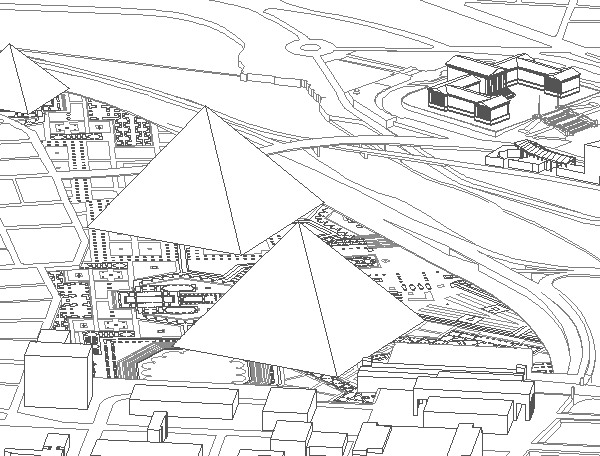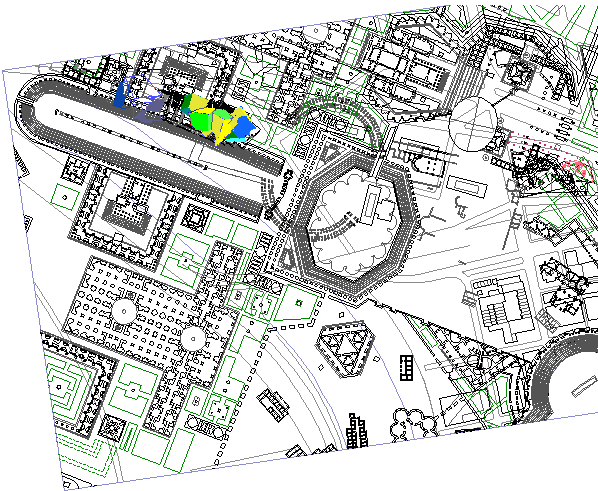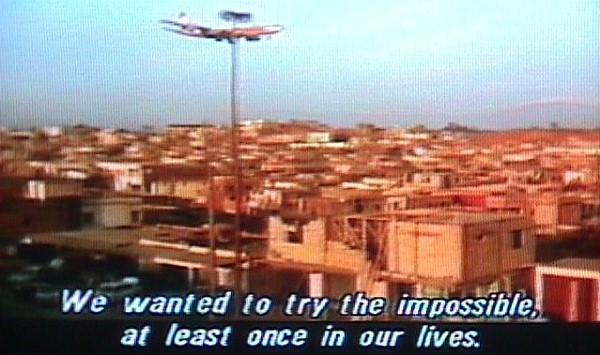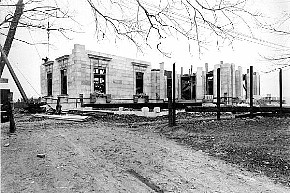031211a flattened Ionic column 3d 2330i07 b
10121101 ICM Theatrum Marcelli etc. 2110i82
12121101 Basilica Sessorianum @ Naumachia Domitiani 3300 x 2200 true north 206ci03
12121102 Basilica Sessorianum @ Circus Nero & Caligula 206ci04
12121103 Basilica Sessorianum @ Sessorium south 206ci05
12121104 Basilica Sessorianum @ Sessorium south 206ci06
12121105 Basilica Sessorianum @ Circus Hadriani 206ci07
12121106 Basilica Sessorianum @ Circus Domitiae 206ci08
12121107 Basilica Sessorianum @ Circus Flaminius 206ci09
| |
2013.12.11 19:42
11 December
 
I'm not sure what it would really be like to work and do research in his proposed Jussieu library. But he makes a lovely argument for this mad parking garage-derived structure as an antidote for the windswept, empty monumentality of the 1960s campus in which it will stand. He argues that the building should be a "social magic carpet," that has been folded and stacked to create a density its setting lacks.
He continues: "Sections of each level are manipulated to touch those above and below; all the planes are connected by a single trajectory, a warped interior boulevard that exposes and relates all programmatic elements."
He foresees the visitor "inspecting and being seduced by the world of books and information--by the urban scenario." He accompanies this design with one of the few really helpful drawings in the show, a diagram of the path through the building from bottom to top.
You needn't follow this path, however. Unlike a real boulevard, this one offers shortcuts--escalators and elevators that, like the chutes and ladders in the children's game, provide elements of discontinnity that make life interesting. Sometimes you'll stroll. At other times, you'll get right to work. And this folded, indeterminate form, which derives from building types that are often viewed as anti-architectural and anti-urban, is deployed to accommodate the accidents and opportunities of urban life that earlier architects and planners purged from the rest of the campus.
Standing in stark contrast to this optimistic design is a 1987 competition entry for a new town at Melun-Senart outside of Paris. The model, a landscape of wood chips, huge nails and broom straws, crisscrossed by highways and interchanges, is a beautiful representation of the ugliness that development almost always brings.
"The site ... is too beautiful to imagine a new city there with innocence and impunity," . Koolhaas writes. He says he decided to begin not with what shouldn't be built but with what shouldn't be destroyed.
"And then we said, 'The rest we will surrender to chaos.' We will abandon the residue ... to the average-contemporary-everyday ugliness of current European-American-Japanese , architecture, and generate, through that ugliness, a potentially sublime contrast between the empty areas of the site--those we had protected from building--and the uncontrollable, almost cancerous chaotic growth of the city as a whole."
Parking garages are almost always an element of that cancerous growth. We needn't find [parking garages] beautiful. But perhaps they do contain the seeds of great things to come.
The consideration of such prodigality as this quite distracts my attention, and compels me to digress from my original purpose, in order to mention a still greater instance of extravagance, in reference to wood. C. Curio, who died during the civil wars, fighting on the side of Caesar, found, to his dismay, that he could not, when celebrating the funeral games in honor of his father, surpass the riches and magnificence of Scaurus--for where, in fact, was to be found such a stepsire as Sylla, and such a mother as Metella, that bidder at all auctions for the property of the proscribed? Where, too, was he to find for his father, M. Scaurus, so long the principle man in the city, and one who had acted, in his alliance with Marius, as a receptacle for the plunder of whole provinces? --Indeed, Scaurus himself was now no longer able to rival himself; and it was at least one advantage which he derived from this destruction by fire of so many objects brought from all parts of the earth, that no one could ever after be his equal in this species of folly. Curio, consequently, found himself compelled to fall back upon his own resources, and to think of some new devise of his own. It is really worth our while to know what this devise was, if only to congratulate ourselves upon the manners of the present day, and to reverse the ordinary mode of expression, and term ourselves the men of the olden time.
He caused to be erected, close together, two theaters of very large dimensions, and built of wood, each of them nicely poised, and turning on a pivot. Before mid-day, a spectacle of games was exhibited in each; the theaters being turned back to back, in order that the noise of neither of them might interfere with what was going on in the other. Then, in the latter part of the day, all on a sudden, the two theaters were swung round, and, the corners uniting, brought face to face; the outer frames, too, were removed, and thus an amphitheater was formed, in which combats of gladiators were presented to the view; men whose safety was almost less compromises than was that of the Roman people, in allowing itself to be thus whirled round from side to side. Now, in this case, which have we most reason to admire, the inventor of the invention? the artist, or the author of the project? him who first dared to think of such an enterprise, or him who ventured to undertake it? But the thing that surpasses all is, the frenzy that must have possessed the public, to take their seats in a place which must of necessity have been so unsubstantial and so insecure. Lo and behold! here is a people that has conquered the whole earth, that has subdued the universe, that divides the spoils of kingdoms and of nations, that sends its laws to foreign lands, that shares in some degrees the attributes of the immortal gods in common with mankind, suspended aloft in a machine, and showering plaudits even upon its own peril!
This is indeed holding life cheap; and can we, after this, complain of our disasters at Cannae? How vast the catastrophe that might have ensued! When cities are swallowed up by an earthquake, it is looked upon by mankind as a general calamity; and yet, here we have the whole Roman people, embarked, so to say, in two ships, and sitting suspended on a couple of pivots; the grand spectacle being its own struggle with danger, and its liability to perish at any moment that the overstrained machinery may give way! And then the object, too, of all this--that public favor may be conciliated for the tribunes harangues at a future day, and that, at the Rostra, he may still have the power of shaking the tribes, nicely balanced as they are! And really, what may he not dare with those who, at his persuasion, have braved such perils as these? Indeed, to confess the truth, at the funeral games celebrated at the tomb of his father, it was no less than the whole Roman people that shared the dangers of the gladiatorial combats. When the pivots had now been sufficiently worked and wearied, he gave another turn to his magnificent displays. For, upon the last day, still preserving the form of the amphitheater, he cut the stage in two through the middle, and exhibited a spectacle of athletes; after which, the stage being suddenly withdrawn on either side, he exhibited a combat, upon the same day, between such of the gladiators, as had previously proved victorious. And yet, with all this, Curio was no king, no ruler of the destinies of a nation, nor yet a person remarkable for his opulence even; seeing that he possessed no resources of his own, beyond what he could realize from the discord between the leading men.

| |
14121101 Hadrian's Villa redrawing with ICM parts started 206ki03
14121101 José María Calvo Ampliación del Museo Diocesano Milán
15121101 Herzog & de Meuron Art Gallery of New South Wales Expansion Sydney
16121101 GAUA 104 data for possible building 2458i01 b
| |
18121101 GAUA06 Minerva Medica Villa Baizeau Crown Hall Phillip Exeter Library Il Teatro del Mondo ICA House Seattle Central Library Wave Wall House Maisons Dom-ino 2018 plans placed 2429i344
18121102 GAUA07 Mausoleum of Romulus Circus of Maxentius German Pavilion Das Canoas House Mikveh Israel Synagogue House for Karl Friedrich Schinkel 001 Guggenheim Museum Bilbao plans placed 2429i345
18121103 GAUA08 Circus of Maxentius Arch of Janus Quadrifrons Composition Three Unité d'Habitation Sher-e-Banglanagar House for Karl Friedrich Schinkel 002 Gallery B Casa da Musica Headquarters of D.A.T.A. Acropolis of Contemporary Art plans placed 2429i346
18121104 GAUA03 Colosseum Tomb of Romulus Villa Stein de Monzie Bauhaus Hotels at the Palais des Congrès Wagner House Jewish Museum House for Otto 8 plans placed 2429i347
18121105 GAUA12 Circus of Maxentius Baths of Constantine Tuberculosis Sanatorium Adler House House 14 House for Karl Friedrich Schinkel 004 Broken Temple Bye House Distorted Villa + 15 plans placed 2429i348
19121101 30th Street Station Railyard REMs wireframe opaque 2430i17
|



